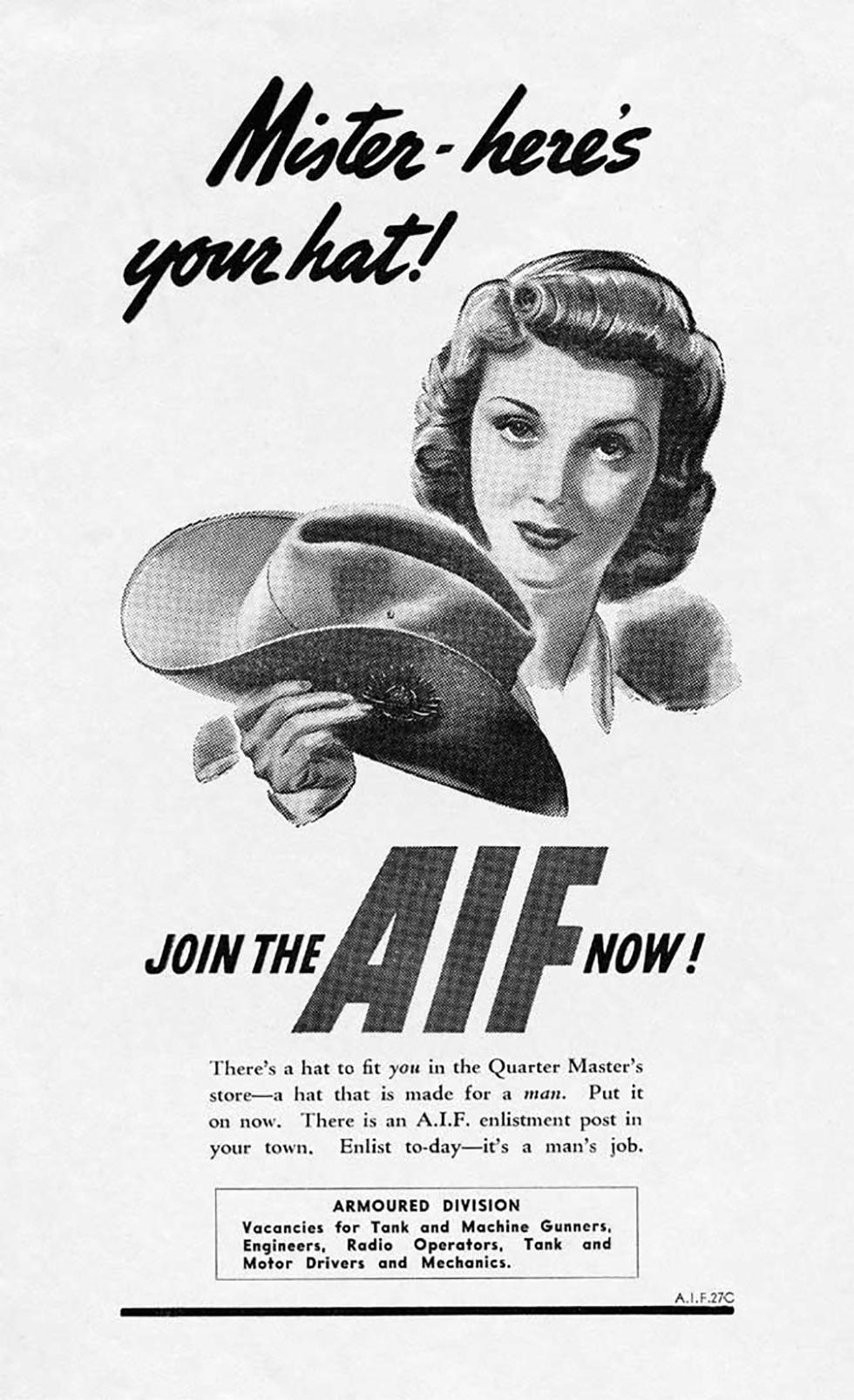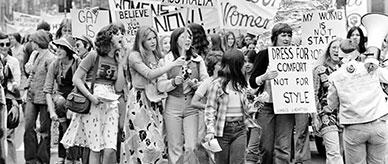


About this record
This is a black-and-white poster with the headline 'Mister – here's your hat! JOIN THE AIF NOW!' The poster shows the smiling face of an attractive woman holding out a slouch hat and looking directly at the viewer. The text reads, 'There's a hat to fit you in the Quarter Master's store – a hat that is made for a man. Put it on now. There is an A.I.F. enlistment post in your town. Enlist to-day – it's a man's job. ARMOURED DIVISION. Vacancies for Tanks and Machine Gunners, Engineers, Radio Operators, Tank and Motor Drivers and Mechanics'.
Educational value
- Is an example of a poster being used to deliver war messages from the Australian Government to its citizens during the Second World War (1939-45) – in 1939 Australia entered the war, declaring war on Germany, and then in 1941 declared war on Japan.
- Is an example of the use of a poster to promote recruitment of men to the Australian Imperial Force – when Australia declared war in 1939, the total army comprised only 3500 soldiers and a part-time Citizen Military Force (CMF) of 80,000 men; 12 days after the war began the Menzies government announced that a special force of 20,000 men, the Second AIF (the First AIF was formed during the First World War), would be raised by volunteer enlistment.
- Reveals that in 1941 there was no conscription (compulsory enlistment in the army), as government policy was that men should volunteer – conscription for overseas duty was introduced in February 1943.
- Depicts the digger's slouch hat, which became a symbol of national pride and dates back to the Australian and New Zealand Army Corps (ANZAC) campaign during the First World War.
- Is a direct appeal for men to enlist in the AIF's Armoured division – the recruitment of men for the armoured forces began in Australia in December 1940, when the first AFV (Armed Fighting Vehicles) Training School was established at Balcombe in Victoria.
- Shows how Australia in the 1940s still regarded itself as a dominion of Britain – the word 'imperial' in the name 'Australian Imperial Force' means 'belonging to the Empire'.
- Is an early example of the work of the Commonwealth Advertising Division, set up in 1941 within the Department of Information, primarily to advertise recruitment drives for men's and women's services, munitions work, war loans and national savings campaigns.
- Indicates that posters were used during the war to raise awareness and send out messages – prior to television, the internet and other mass media, the main media outlets in the 1940s were radio, newspapers and cinema, but posters were also used as an important form of advertising.
- Is an example of an appeal to men's masculinity – the woman in the poster looks directly at the reader and the text emphasises that men should enlist to prove their manhood with phrases such as 'a hat that is made for a man' and 'it's a man's job'.
- Is an example of the use of active language – 'put it on now' and 'enlist today' tell the readers what action the Australian Government wants them to take.
Acknowledgments
Learning resource text © Education Services Australia Limited and the National Archives of Australia 2010.
Related themes
Need help with your research?
Learn how to interpret primary sources, use our collection and more.


